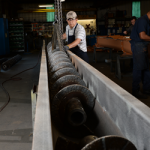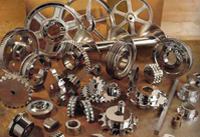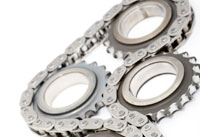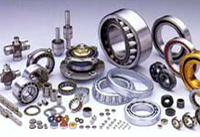
Image Via: Thomas Conveyor Company
A screw conveyor is a unique conveyor that works exactly like a regular conveyor belt in some ways but is totally different in other ways. Screw conveyor systems have been around for decades. Rather than items sliding along a flat conveyor belt, screw conveyors use a rotating blade that moves both liquid and granular materials in a rotating motion. Screw conveyors are often used in a variety of bulk material handling industries including the agricultural industry, food industry, material waste industry, and more. Screw conveyors are available in a variety of sizes, materials, and with different features to meet the unique needs of any application. Thomas Conveyor Company, a screw conveyor manufacturer, describes the distinct advantages of using a screw conveyor:
- Extreme Versatility: Several options and parts combinations are available for conveying a wide variety of materials in many different markets.
- Mixing: The normal rotation of the screw when conveying material also lifts and tumbles the product, which makes a screw conveyor an efficient mixer.
- Simultaneous Conveyance in Two Directions: Combining right-hand and left-hand flights produces bidirectional conveyance.
- Ready Reversibility: No need for soft-start units.
- High-temperature Materials: Properly applied screw conveyors can handle product at temperatures above 1000 degree F.
- Abrasive Materials: Many special materials and hard-coating options are available to extend screw life in extremely abrasive applications.
- Flood Loading Capability: Screw feeders are very efficient and reliable in regulating feed to downstream equipment. The screw diameter, pitch combination, pipe size, and flight configuration can be customized to solve specific bin unloading requirements.
- Total Enclosure Screw Conveyor Systems: Completely enclosed systems protect the environment from the product being handled (dust-tight) and/or protect the conveyed material from the environment.
- Large Lump Size: Within industry guidelines, conveyance of pieces up to 7-1/2” is possible.
- Multiple Inlets or Discharges: Intermediate inlets and/or discharges are readily added.
Screw conveyor systems come in multiple types including helicoid and sectional. A helicoid screw conveyor is a continuous helix which provides a smooth flighting surface. A sectional screw conveyor system is manufactured from steel to form a helix but is available in heavier thicknesses which means it is used for tougher, more abrasive applications. Screw conveyors are not just unique conveyor systems that use ordinary conveyor system components. Rather, they also have their own unique screw conveyor components.


















